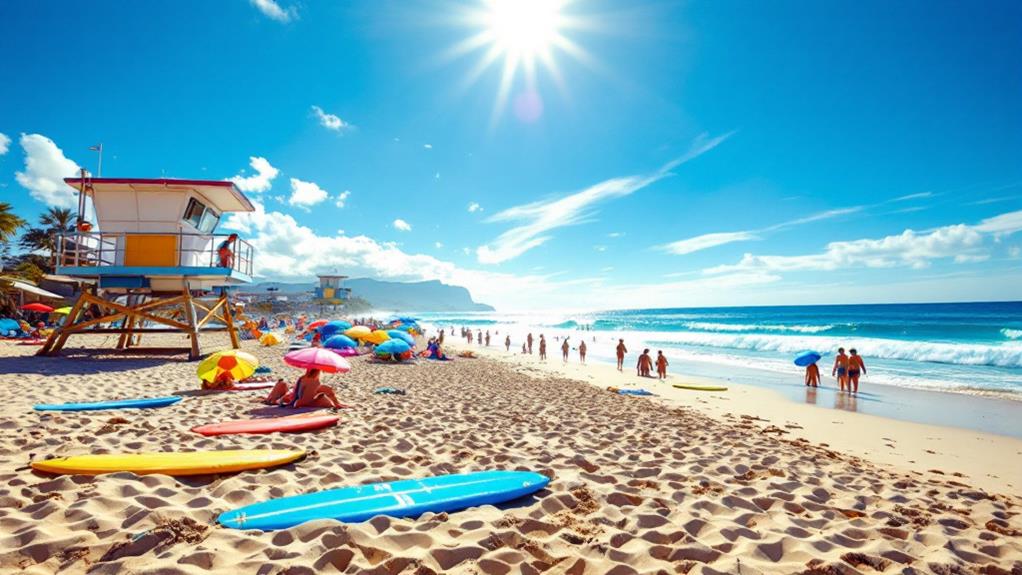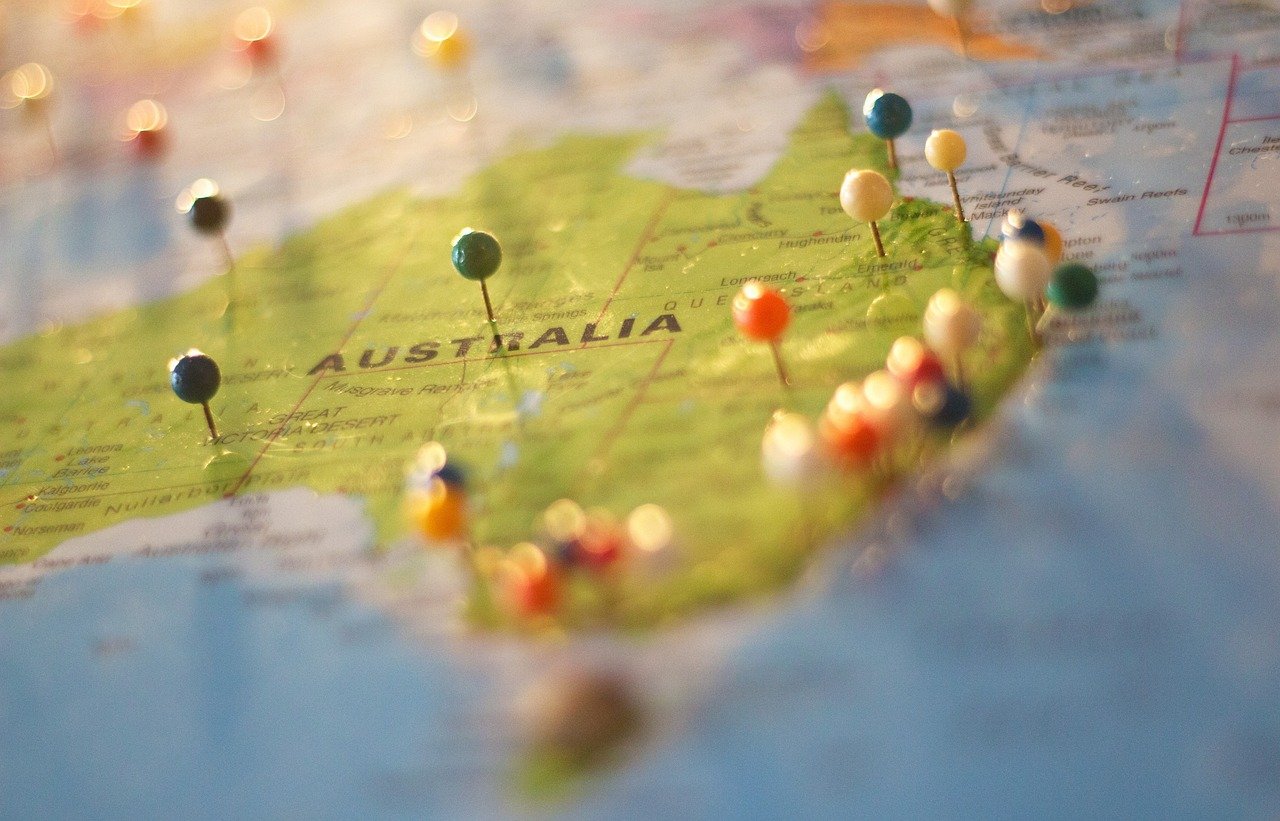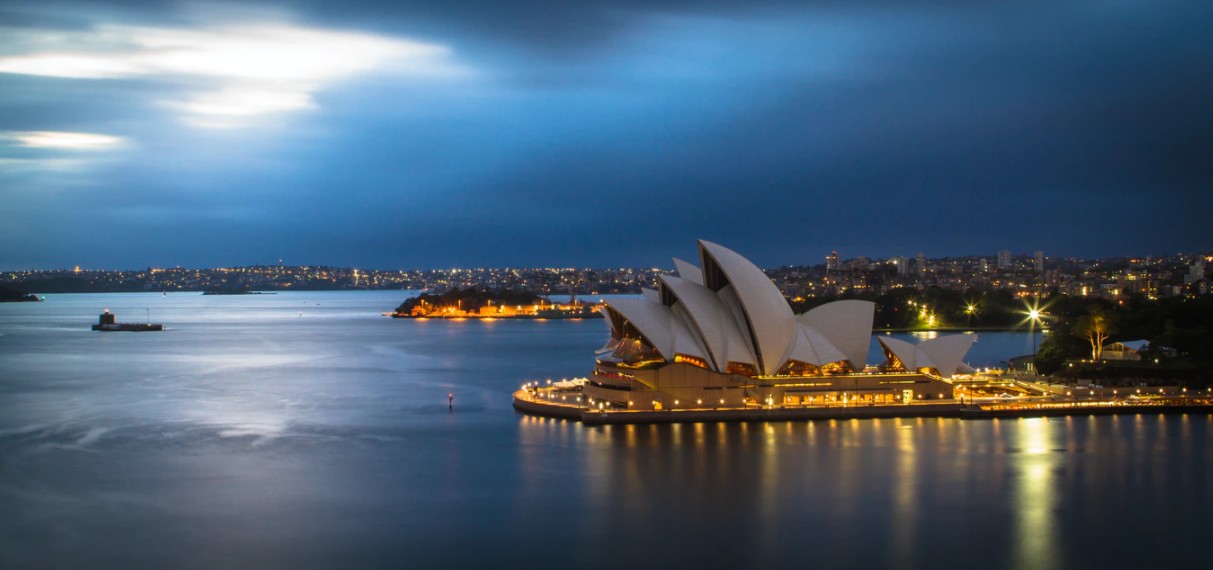When Is Summer in Australia? Understanding the Seasons Down Under

In Australia, summer occurs from December to February, offering a unique mix of climates and activities. You can experience temperatures ranging from 25°C to 40°C (77°F to 104°F). Coastal regions like Sydney and Brisbane are ideal for beach activities with their moderate warmth, while the tropical north sees high humidity and rainfall. Don't forget to keep hydrated and sun-protected, as heat can be intense. Meanwhile, inland areas face bushfire risks due to dry, hot conditions. Regardless if you're a beachgoer or an adventure seeker, there's more to uncover about Australia's varied summer experience.
Australia's Seasonal Overview
Australia's seasonal landscape offers a fascinating contrast, with four distinct seasons immersing the country's diverse climate. When summer arrives in Australia, spanning from December to February, you'll experience the year's hottest temperatures. This season offers warmth ranging from 25°C to 40°C (77°F to 104°F), ideal for enjoying beach activities. It's a perfect time to investigate Australia's lively coastal regions, where surfing, snorkeling, and leisurely beach days become part of your everyday adventures.
While the northern hemisphere hunkers down for winter, Australia's summer provides an escape with its sun-drenched days. However, if you venture into the tropical north, you'll encounter the wet season, marked by high humidity and heavy rainfall. This region presents a unique climate, contrasting sharply with the milder summer conditions in the southern parts of the country. Here, you can still indulge in beach life, but without the intense humidity.
As you travel across Australia, be mindful of the potential for bushfires in hot, dry regions. These natural events are a reminder of the power and beauty of Australia's summer. Always stay informed and prepared, ensuring a safe and enjoyable investigation of this stunning continent.
Summer Weather Highlights
Experiencing summer weather in Australia offers a delightful array of climatic highlights, with warm, sunny days dominating the season from December to February. You'll find average temperatures ranging from 25-40°C (77-104°F) in many regions, ideal for embracing the outdoors. Coastal cities like Sydney enjoy maximum temperatures between 25.7-26.5°C (78.3-79.7°F) and minimums of 17.6-19.6°C (63.7-67.3°F), perfect for beach outings and surfing.
If you're in Brisbane, expect temperatures to soar up to 29.2°C (84.6°F). The city gets 126-172mm of rain, making it part of the rainy season. The tropical north, however, experiences its wet season, meaning heavy rains and increased humidity. This might limit some outdoor activities, but it's an excellent time to witness the lush, lively landscape.
In contrast, southern regions offer milder weather, ideal for barbecues and other outdoor activities. Keep in mind, though, that hot, dry inland areas face increased bushfire risks during summer, so it's essential to stay informed and prepared. Altogether, Australia's summer invites you to investigate its diverse climate and enjoy the lively energy of the season.
Regional Climate Differences

When exploring the regional climate differences in Australia, you'll notice a remarkable diversity that shapes each area's unique summer experience. Australia's summer, lasting from December to February, showcases a variety of climates that impact how you might enjoy the seasons in Australia.
- Tropical North: Here, you'll encounter high humidity and heavy rainfall as the wet season takes over. This region's lush landscapes become a sight to behold, but be prepared for intense downpours.
- Southern Regions: In contrast, the southern areas experience milder temperatures with lower humidity. These conditions create perfect opportunities for outdoor activities without the sweltering heat.
- Coastal Areas: Cities like Sydney and Brisbane offer moderate summer temperatures, making beach outings a popular choice. The coastal breezes provide a revitalizing escape from inland heat.
- Interior Heat: In places like Alice Springs, the climate variability is evident with scorching temperatures often exceeding 35°C (95°F). This region experiences extreme heat and drought, posing challenges for outdoor adventures.
Understanding these regional differences helps you plan your activities, regardless of enjoying the rain-soaked beauty of the tropical north or basking in the milder southern climates.
Best Travel Times
While planning your trip to Australia, it's essential to evaluate the best travel times to guarantee a memorable experience. The best time to visit is during spring (September to November) and autumn (March to May). During these seasons, the weather is mild and ideal for outdoor activities. Spring offers blooming flowers and temperatures ranging from 10°C to 25°C (50°F to 77°F), perfect for wildlife viewing and outdoor festivals. In autumn, you'll enjoy colorful foliage and pleasant temperatures, with Sydney experiencing average rainfall of approximately 115-101mm.
Summer in Australia, from December to February, attracts beachgoers with average temperatures between 25°C and 40°C (77°F to 104°F). This season is lively with activity, but be prepared for the heat. If you're interested in exploring Australia's alpine regions for winter sports, consider visiting during winter (June to August). Southern cities like Melbourne offer cooler temperatures, averaging 6°C to 15°C (43°F to 59°F).
Understanding these seasonal variations will help you choose the best travel times based on your interests. If you're seeking sun-drenched beaches, lively city festivals, or snowy peaks, Australia offers diverse experiences throughout the year.
Safety and Weather Tips

As you plan your trip based on the ideal travel times, it's just as crucial to contemplate safety and weather tips for a worry-free adventure. Summer in Australia, from December to February, presents temperatures ranging from 25-40°C (77-104°F). Here's how you can prepare:
- Stay Hydrated and Protected: With the intense sun exposure, always pack hydration supplies like water bottles. Use sunscreen, wear a hat, and apply insect repellent to shield yourself during outdoor activities.
- Plan for the Wet Season: In the tropical north, the wet season brings heavy rains and potential cyclones. Keep an eye on weather updates to adjust your plans and stay safe from sudden weather changes.
- Beware of Stinger Season: If you're visiting the Great Barrier Reef, remember it's stinger season. Wear full-body wetsuits to protect against jellyfish stings while swimming or snorkeling in these coastal areas.
- Monitor Bushfire Risks: Inland regions face bushfire risks during hot and dry conditions. Adhere to local safety guidelines and stay informed about any fire warnings to guarantee your safety.




